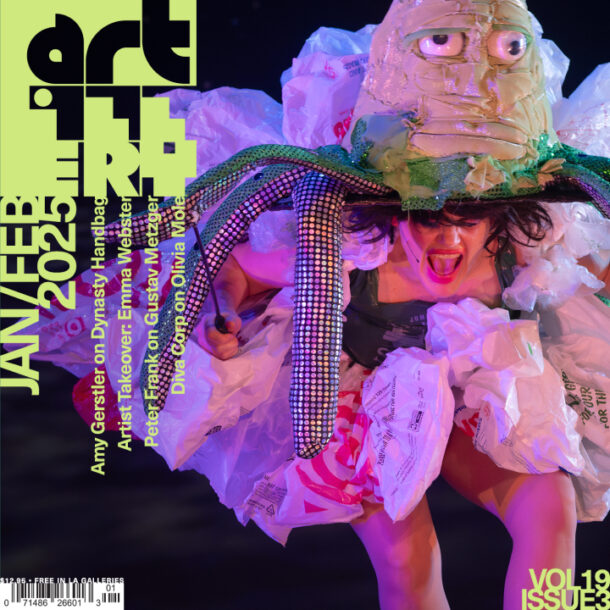Just across the Ohio River from downtown Cincinnati is The Carnegie, a former library in Covington, Kentucky constructed in 1904 one of over 2,500 worldwide funded by Andrew Carnegie. Now a theater and exhibition space, the center serves the local and surrounding communities. Its latest exhibition, “These Things Are Connected,” embraces the links between artistic communities near and far by pairing local artists with those from outside of the Cincinnati and Northern Kentucky area. Five curators were invited to work on the show, adding a collaborative nature and allowing for different projects to enter into dialogue with one another.
“These Things Are Connected” is one of over 100 projects participating in FotoFocus Biennial, the largest photography biennial in the US. Hosted by various museums and institutions in and around Cincinnati, the twelve main exhibitions curated by FotoFocus and all other projects center on the theme of World Record, which references the role of photography as a tool to record, as well as the records and milestones humanity has achieved.
The world record theme is strong throughout “These Things Are Connected.” The five curators, Esther Callahan, Matt Distel, Daniel Fuller, Cameron A. Granger, and Tif Sigfrids, chose artists who highlight photography and image-making as both documentary and artistic tools. Included in the show are examples of straight photography, as well as mixed media installations that incorporate photographic elements.

Dejiah Archie-Davis, The Stars Come Out at Night, 2021.
One powerful pairing is Myra Greene and Lorena Molina curated by Fuller. Greene used as source material an archive of images of family, friends, and since forgotten connections that she inherited from her grandmother. Among the photographs were depictions of fashionable, Black women from the turn of the 20th century, a time when photography was a luxury. Greene used the antique technique of ambrotype to produce the images on small, five-by-seven-inch pieces of clear glass. These same images were also printed on large, 58-by-94-inch vinyl applied to the gallery windows, allowing light to stream through in a similar way to the works on glass, but on a larger scale. While the ambrotypes act as intimate memories of the sitters, the enlarged images command the viewer’s attention and assert their existence. Both forms of images underscore photography’s role as a means for the subjects to establish a sense of self, highlighting specific elements of their taste, personalities, and daily lives. The images also act as self-preservation and were passed down through generations to uphold legacies and memories.
Paired with Greene’s work are Molina’s photographs which show glimpses of various places and people. Molina works through themes of immigration, intimacy and trauma, as well as displacement and the concept of home. Her interest in displacement stems from her experience fleeing civil war in El Salvador and migrating to the US with her family. Molina’s installation includes fabric elements tied into colorful, knotted ropes and arranged along a wall. Like Greene, Molina establishes a sense of self and a connection between people across communities and generations.
Also in “These Things Are Connected” is the pairing of Dejiah Archie-Davis and Xia Zhang curated by Cameron A. Granger. The artists explore the notion of the home as an archive of ourselves, including our own lives and the lives of our loved ones. The images invite viewers to think of parallels between the home and the body, both containing evidence of the past. Granger connects the two artists under a micro exhibition within the larger show titled “Things we can’t untie.” He asks viewers to consider what happens to our understanding of home and the body when our connections to them are altered or damaged and we are forced to rebuild and reclaim a sense of safety. Granger arranged the works in the gallery to disrupt the space of the room. He installed sculptures and paintings that the viewer must move around to navigate the space, including a painting on wood panel that was hung sticking out into the room with its side affixed to the wall.
Connecting local artists with those from outside of the region provides an opportunity to see the similarities between their practices. It also points to the larger goal of FotoFocus to engage with regional, national, and international audiences. In addition to “These Things Are Connected,” FotoFocus’ curated exhibitions include a range of projects at museums and galleries that are on view through the month of October, with most extending into 2023. Many of the programs in FotoFocus are within walking distance of one another, or a short car ride away. One noteworthy presentation is “Tony Oursler: Crossing Neptune“at Michael Lowe Gallery, an exhibition curated by Oursler and Kevin Moore, FotoFocus’ Artistic Director and Curator. “Crossing Neptune” considers the many uses and meanings of water throughout history and includes archival works and ephemera related to water from Oursler’s own collection, as well as original works by the artist.

Baseera Khan, By Faith (Front Door), 2020.
Another powerful exhibition is “Baseera Khan: Weight on History“at the Contemporary Arts Center, the artist’s first solo exhibition in the Midwest. Curated by Amara Antilla and Ylinka Barotto, the show features photography, sculpture, installations, and videos that explore the connections between capital, politics, and the body. Khan raises questions of power structures and systems of knowledge, paying particular attention to marginalized populations whose stories and cultures are erased or misrepresented.
Throughout the biennial, the artists and curators demonstrate how crucial photography is as a tool for documenting the world around us. For the subjects behind many of the images, as well as the creators themselves, the act of making a photograph is a way to claim space and determine a sense of self. It is also a means to connect with other communities and generations and to preserve memories. Time and again, people and groups who have been silenced, misrepresented, or forgotten, are celebrated and remembered through photography. FotoFocus Biennial is a reminder of the powerful and enduring impact of records.


